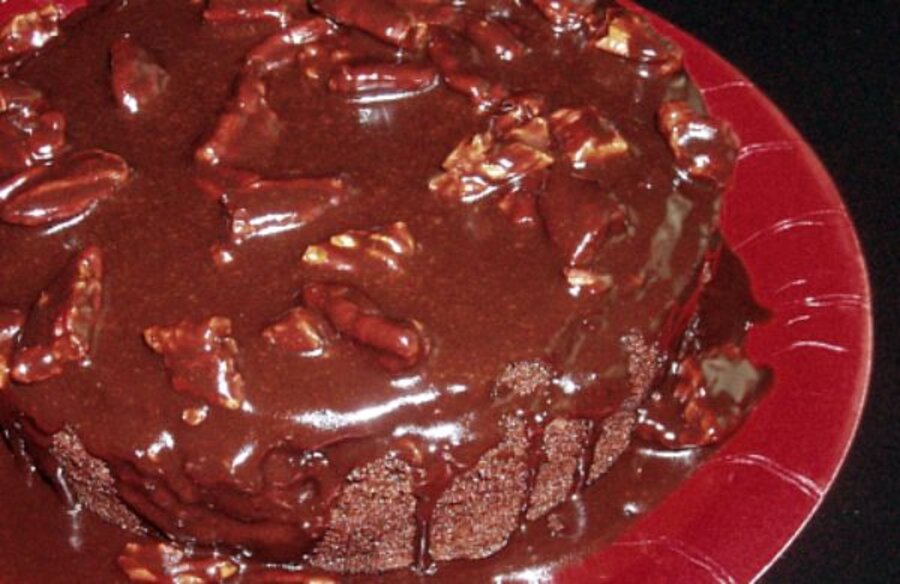By Carol Ramos, The Pastry Chef's Baking
1 cup (2 sticks) unsalted butter
1 cup pecans
1/2 cup (1 stick) unsalted butter
1/4 cup whole milk
1/2 cup high-quality dark cocoa powder, such as Scharffenberger
2 cups sifted powdered sugar (sifted then measured)
1 tablespoon vanilla extract
1/4 teaspoon salt
1. Preheat the oven to 350 degrees F. Grease a 9-inch tube pan or a 10- to 12-cup Bundt pan with butter, sprinkle lightly with flour and tap over the sink to remove any excess.
2. Melt the butter in a large saucepan over medium-low heat. Add the cocoa and whisk until smooth. Add the water and whisk until smooth. Be careful not to boil the mixture. Remove the saucepan from the heat. Add the sugar, eggs, buttermilk, and vanilla to the warm cocoa mixture all at once; whisk until smooth. Add the flour, baking soda, cinnamon and salt all at once; whisk until the dry ingredients are completely incorporated. If there are lumps, strain the batter as you pour it into the pan.
3. Bake for 40 to 45 minutes; the cake is done when it has pulled away slightly from the sides of the pan and feels firm to the touch.
4. Let the cake cool in the pan about 20 minutes.
5. Meanwhile, make the glaze: Arrange the pecans on a baking sheet in a single layer and toast them in the 350 degrees F. oven for 7 to 9 minutes, until golden brown and aromatic. Chop the pecans.
6. Melt the butter over low heat in a medium saucepan. Add the milk, cocoa, and powdered sugar and whisk until glossy. Remove the saucepan from the heat and whisk in the vanilla, salt and pecans.
7. Loosen the cake with a knife or spatula and overturn it onto a serving plate. Spoon the glaze over the cooled cake, covering it thoroughly. Don’t worry if some of the glaze pools inside and around the cake. This cake will keep up to 3 days, covered, at room temperature and glaze just before serving.
Read the full post on Stir It Up!








